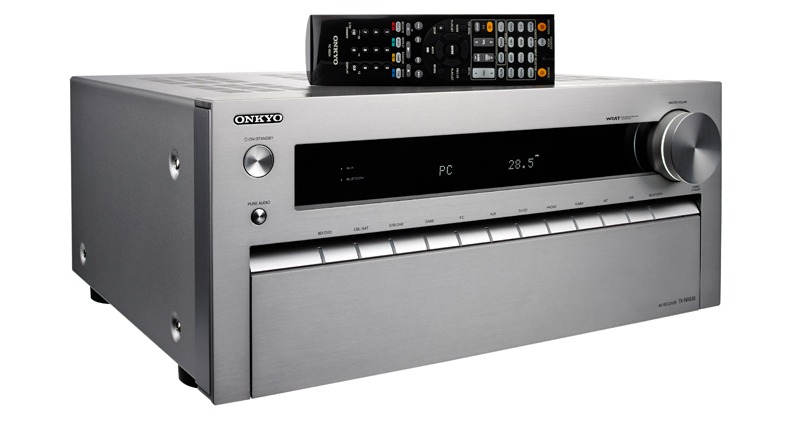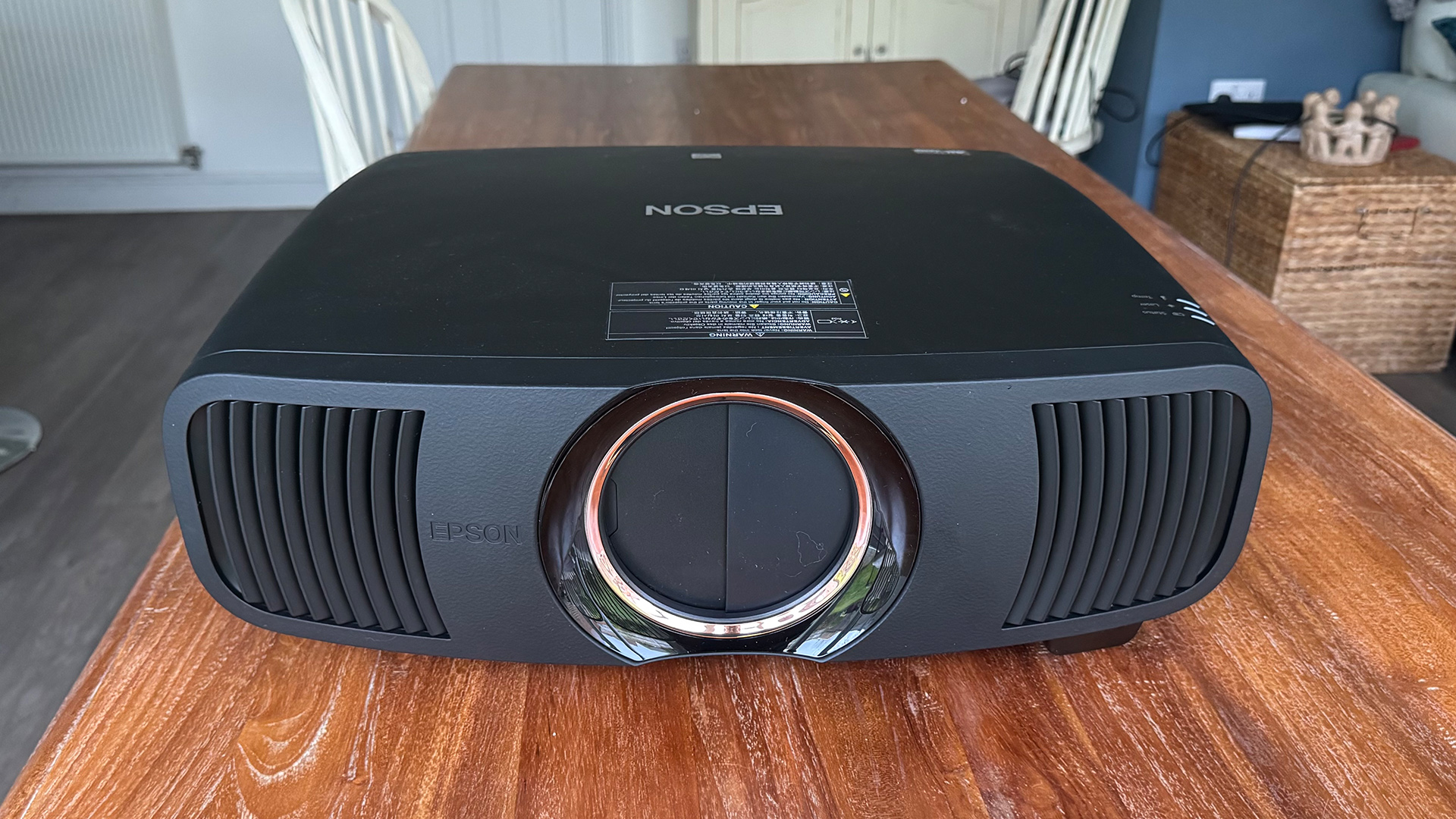What Hi-Fi? Verdict
A most commendable amplifier, but not quite an all-rounder.
Pros
- +
Good effects steering
- +
Fluid presentation
- +
Extensive feature set
Cons
- -
Needs more attack and edge definition
Why you can trust What Hi-Fi?
When it comes to AV amps, Onkyo hasn’t set our world on fire recently. Its receivers have lately tended to be a matter of features and specification over outright sound quality.
But now we have the £1000 Onkyo TX-NR838: are things about to change? Yes. Well, a little. It’s clearly still a matter of features over performance, but one of those features is stand-out.
This is one of the first AV receivers we’ve seen that caters for Dolby Atmos – a surround sound tech that expands on current 5.1 and 7.1 set-ups.
It enhances the spread of audio images and the sensation of being enveloped by increasing the number of speakers and improving the sense of sonic immersion.
Performance
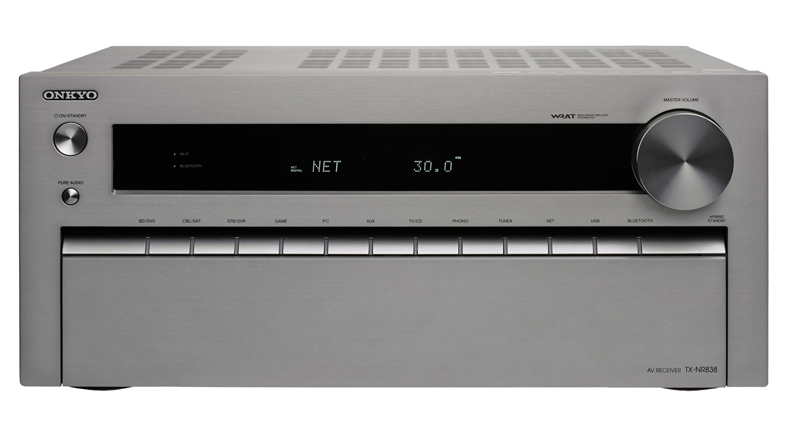
The features are good then, and we’re mostly impressed with the sound quality. We start off with our Man Of Steel Blu-ray.
The film may be iffy but the audio is an advanced assault course, particularly the scene where Zodd is bombard by sound from every angle. Sound is nicely spread, with tight panning and precise placement.
There’s no shortage of power. Scale is effortlessly conveyed, and it gets loud. The presentation is very fluid. It’s smooth enough that you could listen all day and not feel tired.
Tonally it’s a balanced affair, with no undue emphasis on any part of the frequency range. There’s also good weight to the delivery.
But it’s a soft sound. Leading and trailing edges don’t offer much in the way of definition.
That results in an unsubtle performance that doesn’t quite manage to convey some of the nuances in the way notes are played.
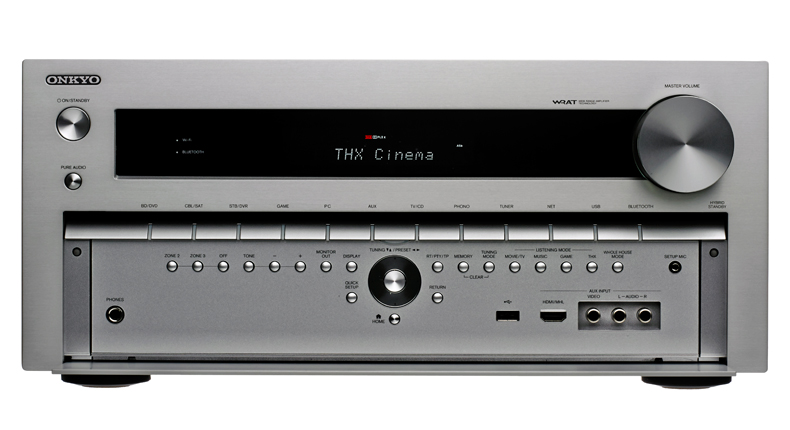
We put on a Blu-ray of Michael Jackson’s This Is It documentary and skip to the scene where MJ instructs his musical director to alter the way he hits the piano.
On the Onkyo, it’s unclear exactly what changes are being made as the notes all sound similarly soft, with little differentiation.
Switching to the Award-winning Pioneer SC-LX57, it becomes clear that the hand is hitting the piano in slightly different ways, with the notes all feeling mildly different until Jackson gives his approval.
Elsewhere, we find dynamics to be a bit too restrained. We love an easy listen, but we also want to be thoroughly moved.
The Pioneer offers far-reaching dynamics that offer excitement. The Onkyo needs a greater sense of energy, and a sense of attack. It helps to turn on the Pure Direct mode, which isolates the analogue path and turns off unused digital circuitry.
The sound definitely tightens up a little, and dynamics are mildly extended, but overall the effect is the same: it’s not that engaging.
Make sure you fiddle with impedance settings. Switching from six ohms to four, we manage to make the sound tighter and punchier. Then again, it is less fluid and a fair bit harsher.
Connections
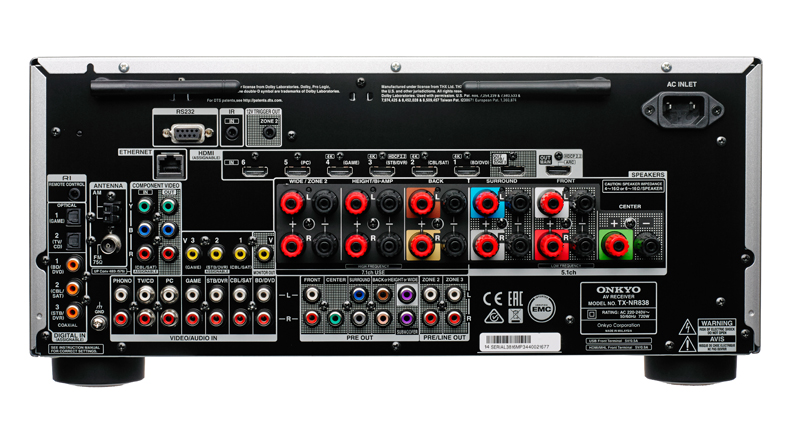
As for the features, Onkyo really has gone all-out. This is a 7.2-channel affair with more connections than Heathrow.
Wirelessly, you get wi-fi and Bluetooth 2.1. It’s quite rare to see these on an AV amp without faffing with dongles.
Time for the good old hard-wired stuff: there are seven HDMI inputs – one at the front, MHL-compatible for transferring mobile content – and two outputs; four composite video – four in (one frontal) and one out. There’s also a set of component connections.
Audio? There are five digital audio inputs: two optical and three coaxial. You also get seven analogue inputs (one frontal), two parallel subwoofer pre-outs, and a moving magnet phono input.
To ensure 4K readiness, the Onkyo is certified with HDMI 2.0 and HDCP 2.2. That’s High-bandwidth Digital Content Protection, the type used for future 4K streaming, broadcasting and premium studio content, and 4K upscaling.
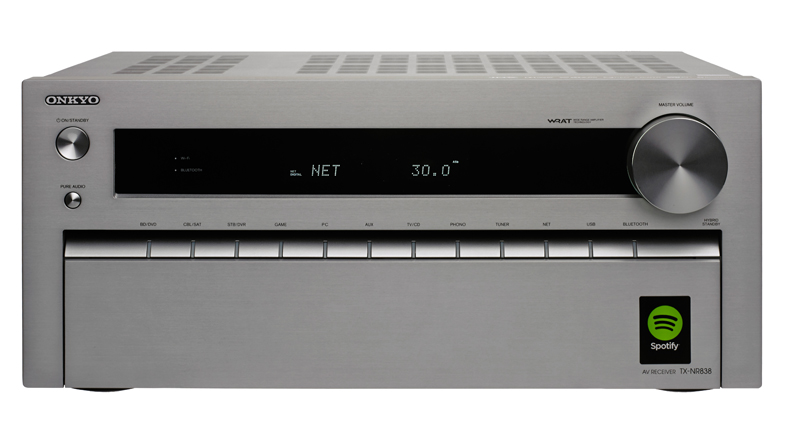
Elsewhere, you get a buffet of internet-based services: Spotify Premium, Deezer, Pandora, Aupeo! and TuneIn Radio. Not enough? You can add your own content with a USB drive.
The amp is also DLNA-certified, which means you can stream content from a compatible networked computer. File compatibility is good.
The Onkyo will cater for MP3, WMA, WMA Lossless, Ogg Vorbis, AAC, Apple Lossless, WAV, FLAC and DSD 5.6 MHz – up to 24-bit/192Hz.
And then there’s Dolby Atmos. In cinemas, that means up to 64 speakers, with some in the ceiling. That’s not practical in the home, so Dolby’s hardware partners will produce side-speakers and speaker-top modules able to emulate the sensation of sound coming from above your head. It’s very exciting. We’re very excited.
But sadly it’s not quite ready yet, and this amp will be able to do those tricks only after an update. Onkyo says it will deliver the update some time in September.
We’ll be sure to come back and re-evaluate things then.
Set-up
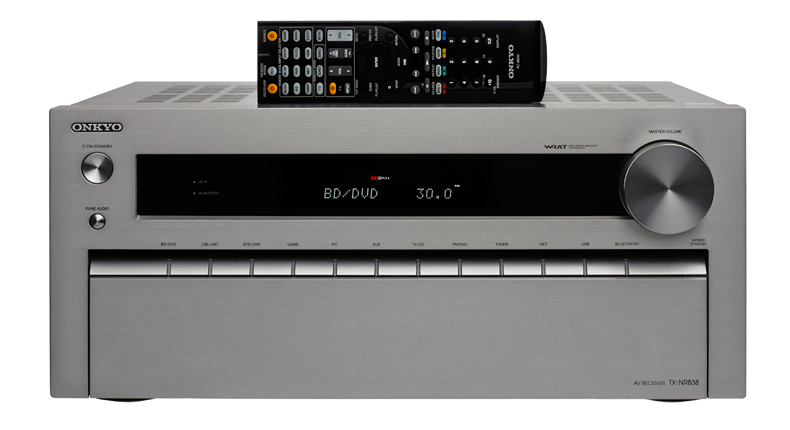
Back in the present, the standard non-Atmos set-up is a breeze. The auto room-calibration process is swift. Onkyo has dropped the Audyssey calibration this year in favour of its own AccuEQ system.
We’re not entirely convinced it’s a good move: it labelled our large speakers as small, and there were issues with distance measurement. Double-check your settings after auto-calibration.
Build & design
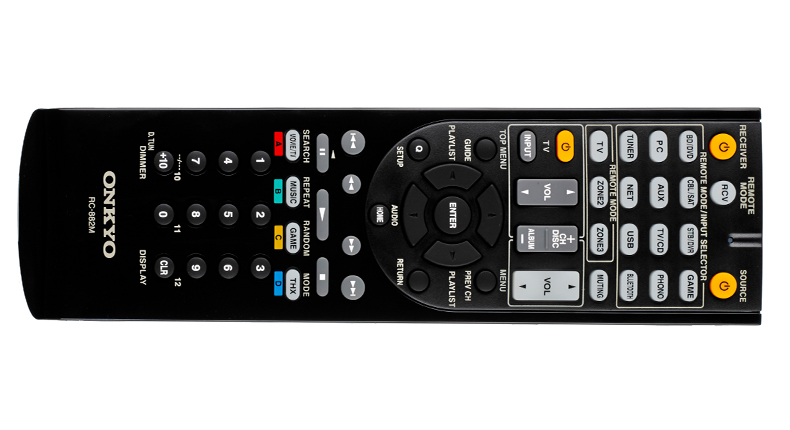
As for physical attributes, this is a very handsome amp. We think it looks particularly fetching in silver, but you can get it in black too.
The design is neat and clean, and we love the thin band of illumination on the volume knob. The overall impression is a box of high quality.
The remote control isn’t quite as sexy – a shrunken thing that feels a little cramped. The Onkyo Remote app, though, (free on Android and iOS) is excellent.
It offers a neat interface, and gives you general control abilities as well as easy streaming from online services and network devices.
Verdict
The Onkyo TX-NR838 is a comprehensive AV receiver. It has an unbelievable number of features that cater for all reasonable AV needs, and even looks to the future.
It’s really quite surprising this box isn’t a lot bigger. The sound is impressive too, but this is the area that still needs a bit of work.
What Hi-Fi?, founded in 1976, is the world's leading independent guide to buying and owning hi-fi and home entertainment products. Our comprehensive tests help you buy the very best for your money, with our advice sections giving you step-by-step information on how to get even more from your music and movies. Everything is tested by our dedicated team of in-house reviewers in our custom-built test rooms in London, Reading and Bath. Our coveted five-star rating and Awards are recognised all over the world as the ultimate seal of approval, so you can buy with absolute confidence.
